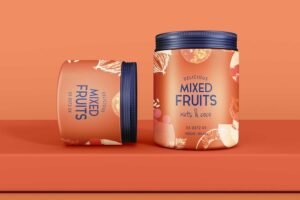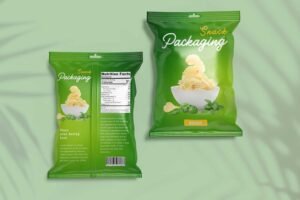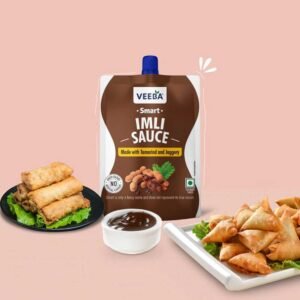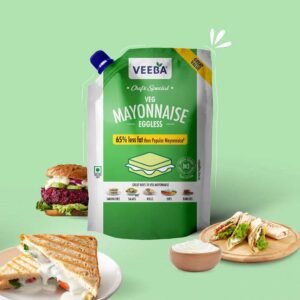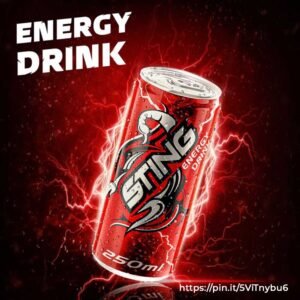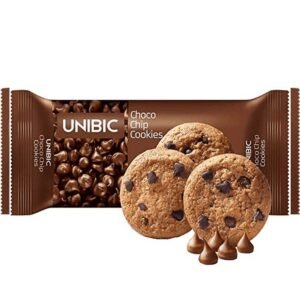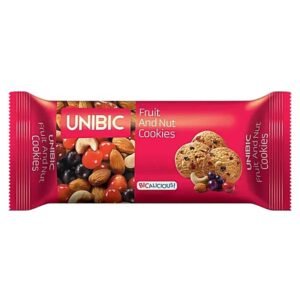We love food; it is our daily requirement. But do you know how your daily processed food items are developed initially food processing industry? Or where did the idea for the product come from? All of these are the outcomes of food product development ideas. Thus, this is something that is needed for tasty food. Check out the stages of food product development. A theory behind creating tasty food is food product formulation.
This process of new food product formulation requires a multi-step procedure that takes a basic new food development concept from the initial stage to the supermarket baskets. While it may sound easy in principle, it took a lot of creativity, technique, and trial and error to give the best results. Practically, there are many major problems in product development. No matter what name you give it, like food formulation, food product formulation, food product development, food product design, or food recipe formulation, the process and efforts are similar.
Read More: How To Build A Strong Brand Through Food Product Development
Stages Of New Food Product Development
➜ Market Trends
➜ Target Audience
➜ Unique Selling Proposition
➜ Ingredient Selection
➜ Flavor Profiles
➜ Nutritional Content
➜ Cost Analysis
➜ Regulatory Considerations
➜ Sustainability
➜ Market Gaps
➜ Competitor Analysis
➜ Consumer Feedback
➜ Brand Positioning
Let’s get into it and find out the different and important stages of new food product development, let’s analyze everything with examples, and in the best possible manner:
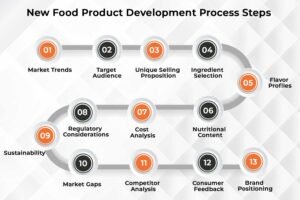
Stage 1: Think & Create (Idea Generation)
➜ The process of new food product development starts with idea generation and concept generation.
➜ In this stage of food recipe formulation, the team is looking for new ideas or concepts using the organization’s resources or the internet.
➜ Also looking for gaps in the market, consumers’ trends and preferences, and new food product development.
Example: Imagine you want to develop a new plant-based protein bar. You might start by researching the growing demand for vegan snacks. And finding unique ingredients like quinoa and chia seeds to differentiate your product. This is the point where you need to research and bring something new to the table.

Stage 2: Potential Analysis (Idea Feasibility Check)
Having a clear concept is the initial stage of the new food product development process; the second step is to carry out a feasibility study.
What do you need to research?
➜ Analysis of the Target Market
➜ Geographical Examination
➜ Analysis of Prices
➜ Analysis of Competitors
➜ Analysis of the Strengths, Weaknesses, Opportunities
➜ Rules and regulations
➜ Market research on the sustainability of the new product development.
Example: For the plant-based protein bar, you would work on the cost of sourcing organic quinoa and chia seeds, estimate production costs, and project potential sales based on market demand.
Stage 3: Product Mockup (Sample Development)
➜ A new food development process prototype occurs at this stage.
➜ This includes deciding on the food product formulation and choosing ingredients for the product development.
➜ Developing variations to the foods towards the formulation as well as the taste, texture, and appearance that are desired.
Example: Creating several versions of the plant-based protein bar, each with different ratios of quinoa, chia seeds, and natural sweeteners, to find the best combination.
Stage 4: Taste Panel Review (Sensory Evaluation)
➜ Sensory evaluation is the main step in which you present your sample to the tasters and collect the results in the form of liking, flavor, texture, aroma, and so on.
Example: Organizing a taste test event where potential consumers sample different versions of the protein bar and provide feedback through surveys or focus groups.
Stage 5: Nutrition Insights
➜ A nutritional analysis in new food product development helps you understand your food product’s nutritional content and label it properly.
➜ This will help marketers create awareness of the product’s health benefits.
Example: Here is the nutritional analysis that checks the protein content, fiber, vitamins, and minerals in the plant-based protein bar to highlight its nutritional value on the packaging.
Stage 6: Packaging Design Planning
➜ The safety of the product is what proper packaging means, as it creates the attraction of consumers. And what message do you want to convey about your brand?
➜ Designing and selecting packaging media that not only has functional usage but can also boast of an artistic impression.
Example: Designing eco-friendly packaging for the protein bar that highlights its plant-based ingredients and health benefits.
Stage 7: Freshness Assurance Test (Shelf Life Analysis)
➜ Testing enables you to get timelines to the point where your product is safe and of quality when stored under various conditions.
➜ This step is necessary for enhancing the life cycle and safety of the product.
Example: Conducting tests to see how the protein bar holds up over time in different environments, such as room temperature and refrigerated storage.
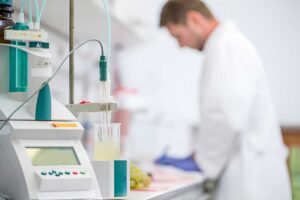
Stage 8: Certification Assurance
➜ Before launching your food product formulation, it must comply with local and international food safety regulations.
➜ This involves submitting your product for approval and ensuring it meets all legal requirements.
Example: Submitting the plant-based protein bar for approval with relevant food safety authorities and ensuring all ingredients and labeling meet regulatory standards.
Stage 9: Trial Batch Process
➜ Pilot production involves producing a small batch of your product to test the production process and identify any issues.
➜ To make necessary adjustments before full-scale manufacturing.
Example: Producing a limited quantity of protein bars to test machinery, production flow, and quality control measures.
Stage 10: Market Launch: Grand Reveal
➜ The final stage is launching your product in the market.
➜ This involves developing a marketing strategy, creating promotional materials, and distributing the product to retailers or directly to consumers.
Example: Launching the plant-based protein bar with a marketing campaign highlighting its unique ingredients, health benefits, and sustainable packaging.
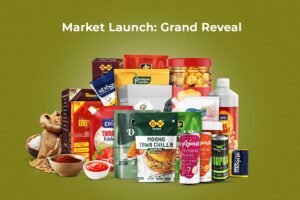
It is a bit difficult for you to understand the whole food formulation process. But don’t worry, Foodsure is always here to solve all your issues and make the difficult processes easy and simple for you. These steps in food product development are necessary for amazing product development.
Challenges In Taking New Food Products From Lab To Life
➜ Sourcing the Best Ingredients: Problems in sourcing unique or functional ingredients at scale.
➜ Reliable Performance: Regularity of quality and texture in large sets of food.
➜ Stable Freshness: To maintain physical characteristics and improve the taste of the products over a given period.
➜ Smooth Execution: Adapting lab-scale methods to commercial production without altering product characteristics.
➜ Smart Budgeting: Policies for dealing with threats that seem to hinder innovation while at the same time demanding value for consumers.
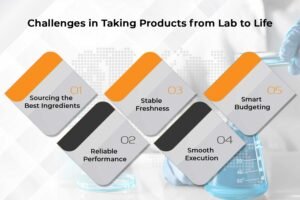
Case Studies In New Food Product Development
1. Veeba Foods: Why Mayonnaise & Sauces Excel
➜ Key Strategy: Veeba concentrates on the high quality of the ingredients and spices with flavor mixers that suit the Indian palate.
➜ Innovation: Unique product lines such as low-fat mayonnaise and exotic sauces like tandoori and chipotle, etc.
➜ Execution: The ability to easily transfer laboratory formulations into full commercial food production.
➜ Result: Became recognized as a reliable brand for buyers in the HoReCa (Hotel, Restaurant, Catering) and retail sectors.
2. Sting Energy Drink: Mass Appeal through Recipe Innovation
➜ Unique Formulation: Sting energy drinks contain caffeine, taurine, and B vitamins to ensure that a consumer gets energy instantly.
➜ Market Savvy: Mass market consumer because it is cheaper than premium brands such as Red Bull.
➜ Challenge Overcome: Aspired to the ideal fizziness and tasty beverage at an even lower cost.
➜ Impact: Sting became a popular RTD brand name across India in the required beverages market, establishing Pepsico’s dominance in the energy drinks category.
3. Unibic: Dominating the Cookies Market
➜ Recipe Innovation: Launched high-end cookies with main ingredients such as chocolates, oats, and dried fruits.
➜ Differentiation: Focused on customer satisfaction coupled with flexibility with the flavors choco-chip, almond, and multigrain.
➜ Technology: Wire-cut cookie manufacturing was used for improved texture within the cookies as well as its appearance.
➜ Outcome: Start a brand that would focus solely on the higher end of the market, which seemed to be missing from the market in terms of cookies.
Read More: Trends In Food Product Development For 2024-2025
🚀 Ready to Launch Your Food Product Formulation?
Get expert help with formulation, compliance, and market-ready strategies. Book a FREE 30-minute consultation with our team today.
Process For New Food Product Development – Wow Moment Formulation
| Stage | Process Step | Details |
|---|---|---|
| 1 | Market Research & Consumer Insights | Identifying trends, target audience preferences, and competitive analysis. |
| 2 | Concept Development & Ingredient Selection | Defining the USP, selecting high-impact ingredients, and ensuring innovation. |
| 3 | Recipe Formulation & Prototyping | Developing multiple test formulations, optimizing taste, texture, and nutritional benefits. |
| 4 | Sensory Testing & Refinement | Conducting consumer panels, refining the product for a WOW experience. |
| 5 | Packaging & Regulatory Compliance | Designing eye-catching packaging, ensuring FSSAI/FDA compliance, and labeling accuracy. |
| 6 | Pilot Production & Market Launch | Small-scale production for testing, feedback integration, and commercial launch strategy. |
Why Choose Foodsure as Your Innovative Recipe Partner?
➜ All-in-One Services: Foodsure has expertise in recipe formulation, process optimization, and quality assurance.
➜ Results That Matter: Proven experience with products like protein wafers, prebiotic sodas, and preservative-free milkshakes.
➜ People-First Approach: Every formulation is created to meet consumer needs and preferences.
➜ Growth Capacity: Smooth transition from lab to commercial production with consistent quality.
➜ Meeting the Rules: Expertise in directing FSSAI, FDA, and international food safety standards.
➜ Ideas in Action: Constantly searching for new trends and ingredients, such as caffeinated chewing gums and cocktail bombs.

Your Food Brand Journey Starts With Just One Call!
Foodsure isn’t just a service provider; in fact, they are your partner in this journey of the food Formulation business. We turn food industry challenges into success stories. We’ve helped major brands like Veeba Foods, Sting Energy Drink, and Unibic achieve their goals with innovative solutions and expert guidance. Without wasting much time and with full trust, contact Foodsure. Your Food Recipe Formulation Partner now at +918130404757 and get started with the massive blockbuster recipe!
FAQs
How long does the complete food product development process usually take?
Timelines vary based on the complexity of the product, regulatory hurdles, and scale-up requirements. On average, developing a market-ready food product takes between 3 to 9 months, covering formulation, testing, compliance, packaging, and pilot runs. With expert guidance, this timeline can be streamlined without compromising quality or compliance.
What makes a structured food product development process essential for brand success?
A structured process ensures your product is not just tasty—but safe, compliant, scalable, and market-ready. From concept screening to consumer validation, each stage reduces risk, aligns the product with your brand’s identity, and increases the chance of long-term success in a competitive market. Skipping steps often leads to costly rework or product failure.
What’s the biggest mistake to avoid during food product development?
The biggest mistake is skipping validation steps—like consumer testing, shelf-life studies, or cost analysis—just to rush to market. Without these, your product may fail in taste, safety, or profitability. Following all 10 stages ensures you minimize risk, meet industry standards, and build a product that’s both scalable and successful.

